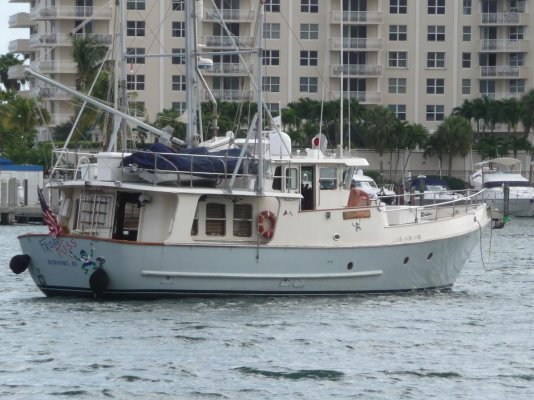This is a very interesting discussion, mind if I ask a question?
So, I understand what your saying about cruising vs passagemaking and boat capabilities. So...if you can safely get away with a 300 mile range to cruise anywhere in North America, then what would you say would be a safe range to cruise almost anywhere worldwide? Not talking about the ocean-crossing portion, but rather, if you were to ship your boat across the ocean, then once at the destination what would be a safe range for Europe, Asia, Australia, etc to be an international cruiser?
Thats a tough one, and I have no idea what the answer is.
I would guess, and thats only a guess is that the more populated an area is the more fuel opportunities.
My 300NM in North America is based on looking at charts, reading, and my own travels.
The longest documented jaunt I can find is approx 320 NM from Yakutat to Seward, but even that could be shortened down to 235NM by going Yakutat to Cordova.
There is also a leg in Mexico from ensenada to turtle bay at 282NM
The rest of north american is much shorter.
Personally I prefer a ample fuel reserve. My boat for example holds 440 gallons, and we get 1.5NMPG at 9 knots and 1.75NMPG at 8 knots. That gives us a run dry range of between 660 and 770 NM depending on speed, sea state, etc...
Last summer we took the boat Yakutat AK to Seward AK which was 320NM. We had very rough weather part of the trip, and still had enough fuel to run the last 50NM at a 14 KT fast cruise (to make it to port before dark.)
So, based on that I'd be MORE than comfortable taking our boat, weather permitting anywhere in North America. With a little research and fuel planning I would have no issues taking her much further, say through the panama canal into the carribean. Thats a big statement, but I think its probably doable fuel wise.





